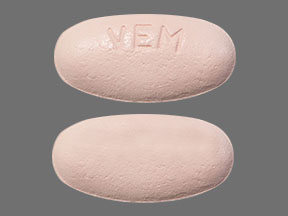Zelboraf Disease Interactions
There are 7 disease interactions with Zelboraf (vemurafenib).
- Lung toxicity
- Cutaneous malignancies
- Dermatological reactions
- Hepatic impairment
- QT prolongation
- Renal impairment
- Visual complications
Multikinase inhibitors (applies to Zelboraf) lung toxicity
Moderate Potential Hazard, Moderate plausibility. Applicable conditions: Interstitial Pneumonitis, Pulmonary Impairment
The use of certain multikinase inhibitors has been associated with pulmonary toxicity. Serious cases of interstitial lung disease (ILD), including fatal cases and interstitial pneumonitis or pulmonary fibrosis have been reported. Caution is recommended when using these agents in patients with a history of interstitial pneumonitis or pulmonary fibrosis or those patients presenting with acute onset of new or progressive unexplained pulmonary symptoms such as dyspnea, cough, and fever pending diagnostic evaluation. If ILD is confirmed, these agents should be permanently discontinued and appropriate measures should be instituted. Treatment should be immediately withheld in patients diagnosed with ILD/pneumonitis and permanently discontinued if no other potential causes of ILD/pneumonitis have been identified.
Vemurafenib (applies to Zelboraf) cutaneous malignancies
Moderate Potential Hazard, Moderate plausibility. Applicable conditions: Skin Cancer, History - Skin Cancer
Cutaneous squamous cell carcinoma, keratoacanthoma, and melanoma occurred at a higher incidence in patients receiving vemurafenib. Potential risk factors associated included age (> 65 years), prior skin cancer, and chronic sun exposure. It is recommended to perform dermatologic evaluations prior to initiation of therapy and periodically thereafter as clinically indicated. Consider dermatologic monitoring for 6 months following discontinuation of vemurafenib.
Vemurafenib (applies to Zelboraf) dermatological reactions
Moderate Potential Hazard, Moderate plausibility. Applicable conditions: Dermatitis - Drug-Induced
Severe dermatologic reactions, including Stevens-Johnson syndrome, toxic epidermal necrolysis, and mild to severe photosensitivity can occur in patients treated with vemurafenib. Consider dose modifications for intolerable >= Grade 2 photosensitivity. It is recommended to advise patients to avoid sun exposure, wear protective clothing and use a broad-spectrum UVA/UVB sunscreen and a suitable lip balm when outdoors while on vemurafenib treatment. Permanently discontinue vemurafenib in patients who experience a severe dermatologic reaction.
Vemurafenib (applies to Zelboraf) hepatic impairment
Moderate Potential Hazard, Moderate plausibility. Applicable conditions: Liver Disease
Liver injury leading to functional hepatic impairment, including coagulopathy or other organ dysfunction may occur with the use of vemurafenib. Based on a population pharmacokinetic analysis to evaluate the effect of hepatic impairment, no dose adjustment is recommended for patients with mild and moderate hepatic impairment. The appropriate dose of vemurafenib has not been established in patients with severe hepatic impairment. It is recommended to monitor transaminases, alkaline phosphatase, and bilirubin before initiation of treatment and monthly during treatment, or as clinically indicated; and to manage laboratory abnormalities with dose reduction, treatment interruption, or treatment discontinuation as appropriate.
Vemurafenib (applies to Zelboraf) QT prolongation
Moderate Potential Hazard, Moderate plausibility. Applicable conditions: Arrhythmias, Electrolyte Abnormalities
Vemurafenib can cause dose dependent QT prolongation which may lead to an increased risk for ventricular arrhythmias, including Torsade de Pointes. It is recommended not to start treatment in patients with uncorrectable electrolyte abnormalities, QTc > 500 ms, or long QT syndrome, or in patients who are taking medicinal products known to prolong the QT interval. Evaluate patients prior to and following treatment initiation or after dose modification for QTc prolongation, evaluate ECG and electrolytes (including potassium, magnesium, and calcium) periodically, and thereafter as clinically indicated. Vemurafenib should be withhold in patients who develop QTc > 500 ms. Upon recovery to QTc <= 500 ms, restart at a reduced dose and it should be permanently discontinued if the QTc interval remains > 500 ms and increased > 60 ms from pre-treatment values after controlling cardiac risk factors for QT prolongation (e.g., electrolyte abnormalities, congestive heart failure, and bradyarrhythmias).
Vemurafenib (applies to Zelboraf) renal impairment
Moderate Potential Hazard, Moderate plausibility. Applicable conditions: Renal Dysfunction
Renal failure, including acute interstitial nephritis and acute tubular necrosis may occur with the use of vemurafenib. Based on a population pharmacokinetic analysis, no dose adjustment is recommended for patients with mild and moderate renal impairment. The appropriate dose of vemurafenib has not been established in patients with severe renal impairment. It is recommended to measure serum creatinine before initiation of therapy and periodically during treatment.
Vemurafenib (applies to Zelboraf) visual complications
Moderate Potential Hazard, Moderate plausibility. Applicable conditions: Visual Defect/Disturbance
Uveitis, blurry vision, and photophobia can occur in patients treated with vemurafenib. Monitor patients for signs and symptoms of uveitis. Care must be exercised when using this agent in patients with ophthalmological complications.
Switch to professional interaction data
Zelboraf drug interactions
There are 628 drug interactions with Zelboraf (vemurafenib).
Zelboraf alcohol/food interactions
There is 1 alcohol/food interaction with Zelboraf (vemurafenib).
More about Zelboraf (vemurafenib)
- Zelboraf consumer information
- Check interactions
- Compare alternatives
- Pricing & coupons
- Reviews (4)
- Drug images
- Side effects
- Dosage information
- During pregnancy
- FDA approval history
- Drug class: multikinase inhibitors
- Breastfeeding
- En español
Related treatment guides
Drug Interaction Classification
| Highly clinically significant. Avoid combinations; the risk of the interaction outweighs the benefit. | |
| Moderately clinically significant. Usually avoid combinations; use it only under special circumstances. | |
| Minimally clinically significant. Minimize risk; assess risk and consider an alternative drug, take steps to circumvent the interaction risk and/or institute a monitoring plan. | |
| No interaction information available. |
See also:
Further information
Always consult your healthcare provider to ensure the information displayed on this page applies to your personal circumstances.


